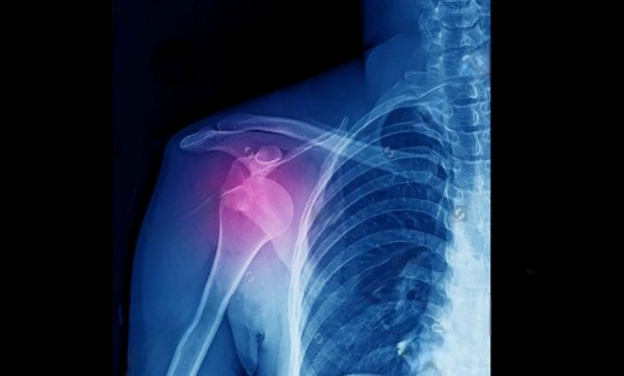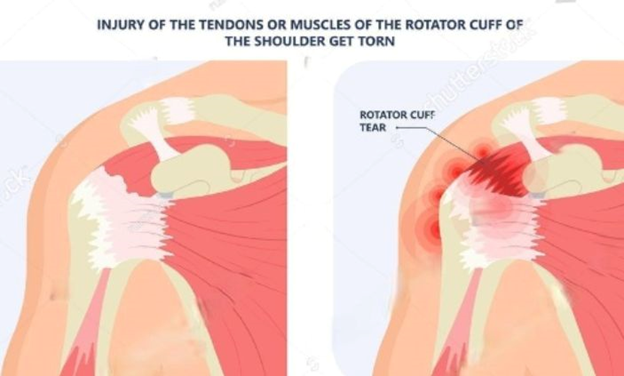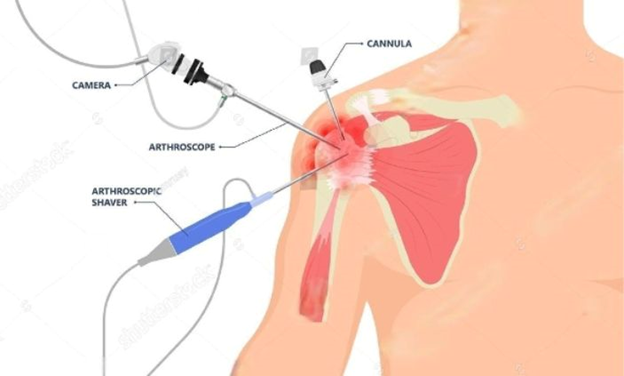Dr. rahul khanna
M.S. (ORTHO), FIASM, FIA
Specialist Joint Replacement, Arthroscopy & Sports Injury
Menu
Dr. rahul khanna
M.S. (ORTHO), FIASM, FIA
Specialist Joint Replacement, Arthroscopy & Sports Injury
Menu
Rotator Cuff: Types of Tears and Repair Options
A vital collection of muscles and tendons in the shoulder joint, the rotator cuff enables a range of arm motions, including lifting and rotating. Injuries to these tissues can affect everyday activities and sports performance by causing discomfort, weakness, and limited movement. Although rotator cuff tears are a prevalent concern, proper therapy and rehabilitation require an understanding of the various types of rips and the available repair methods.

Types of Tears
There are many different types and sizes of rotator cuff tears, from microscopic little nicks to massive chasms that need to be addressed seriously. The most prevalent kinds are broken down as follows:

- Partial Thickness Tears: These tears, which range from little fraying to serious damage, only impact a segment of the tendon. They might or might not go all the way through the thickness of the tendon.
- Full-Thickness Tears: Complete rupture of the tendon, severing it from its attachment to the bone, is the result of full-thickness tears. The stability and function of the shoulder are impacted by these tears, which can differ in size and severity.
- Massive Tears: As the name implies, these tears are large, severe, and typically require surgery to repair.
Diagnosis
- Physical Examination: A medical expert will do a comprehensive physical examination to evaluate the stability, strength, and range of motion of the shoulder. Certain techniques, such as the “empty can test” and “drop arm test,” may be useful in detecting rotator cuff issues.
- Imaging Studies: X-rays, magnetic resonance imaging (MRI), and ultrasound are standard diagnostic imaging methods used to visualize the location and extent of rotator cuff injuries. Treatment choices are informed by the useful information these imaging methods offer regarding the size, location, and surrounding structures of the tear.
Conservative Treatment: Taking It Easy
Conservative treatment may be the best option if your tear is tiny or you’re not quite ready for surgery. This method frequently combines physical therapy, rest, and anti-inflammatory drugs to help reduce discomfort and increase the range of motion. It’s similar to hoping for the best while giving your shoulder some TLC.
Procedure
Arthroscopy Repair: Minimally invasive arthroscopy procedures can be used to repair the majority of rotator cuff injuries. Using a tiny camera (arthroscope) and specialized instruments, the surgeon can reach the torn tendon during arthroscopic surgery by making small incisions around the shoulder joint. To promote healing and restore function, the ripped tendon is subsequently sewn back to the bone using sutures or anchors.

Recovery & Rehabilitation
- Immobilization: A sling may be used to immobilize the shoulder after rotator cuff repair surgery to preserve the repair and speed up the healing process. Patients are instructed by their healthcare provider to gradually enhance shoulder mobility and to refrain from vigorous activities.
- Physical Therapy: With an emphasis on regaining the shoulder’s strength, flexibility, and function, physical therapy is essential to the recovery of the rotator cuff. The rehabilitation program may include therapeutic exercises, manual therapy techniques, and modalities like ultrasound and electrical stimulation to maximize results.
The Lowdown on Understanding Rotator Cuffs
Although rotator cuff injuries can have a major negative impact on quality of life and shoulder function, excellent outcomes can be achieved with prompt diagnosis and appropriate treatment. Individuals are better equipped to make decisions regarding their shoulder health and follow efficient treatment plans when they are aware of the many types of tears and the available repair methods.
Seek assessment from a trained healthcare expert if you suspect a rotator cuff tear or are suffering shoulder pain. You can regain shoulder function and confidently resume your daily activities with the assistance of early intervention and customized treatment strategies. Make an appointment for a visit with an orthopedic doctor to discuss your rotator cuff repair alternatives and begin the healing process.
Emergency?
24 Hour Ready
Call Us for Emergency
+91-9828501360
Book an Appointment
Seamless Fitness Care Access: Booking an Appointment with Your
Trusted Doctor